
The most of TB-7s were delivered to the 14th TBAP (heavy bomber air regiment), that was not operational at the beginning of the war. Nine planes on 12 had diesel engines.
Few days after the war's outbreak, Stalin took interest in this unit as a retribution weapon able to strike against target in the enemies rear, even if only symbolically. So, the regiment was immediately strengthened with crews from civil aviation and the NII VVS. The reformed regiment was named the 412th and later 432th TBAP.
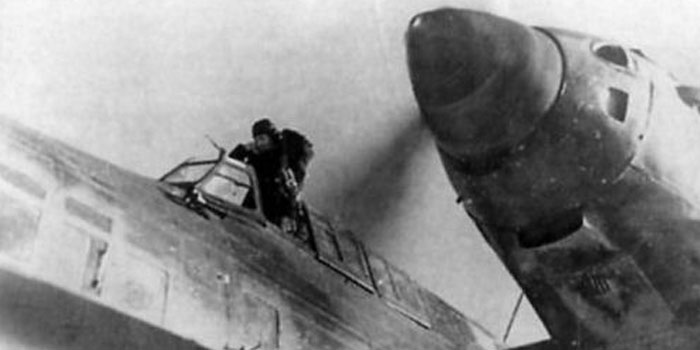
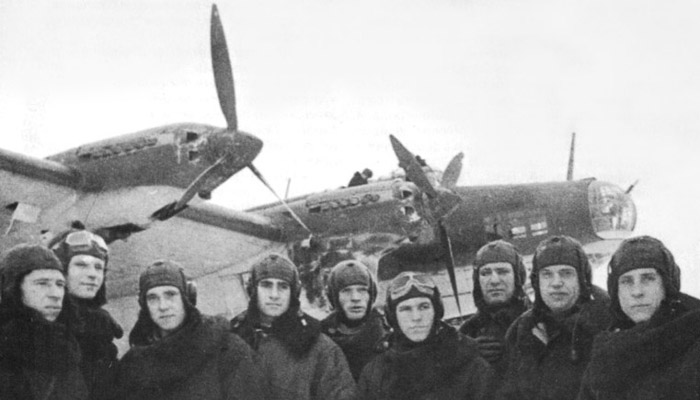
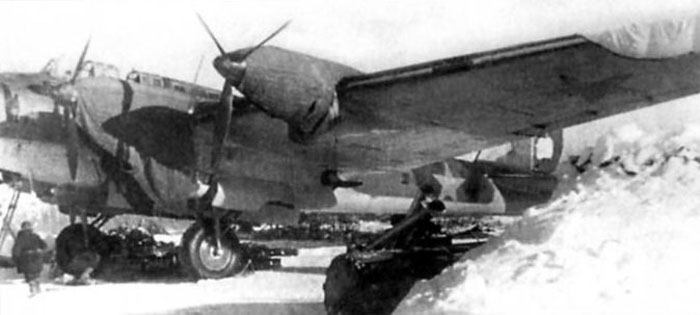
Eight M-40 engined planes were chosen to attack Berlin starting from Pushkin airport near Leningrad on 10 August 1941, but only five reached Berlin due to the unreliability of the engines.
Seven TB-7s were lost in August 1941.
The commander of the unit, col. Lebedev re-engined the remaining planes with AM-35, that allowed to fly at 5.000 m of altitude, out of the range of the AA fire.
In October 1941, after having received new planes from the factory, the regiment launched raids over Berlin, Konigsberg, Danzig and other objectives. In the winter 1941-42, it was given the task to bomb a railway bridge across the Volga and deliver an agent in the enemy's rear.
From August 1941 to May 1942, the regiment flew 226 combat missions dropping 606 tons of bombs; it lost 14 planes, of which nine in accidents, and 61 crew members. 17 new planes were delivered to plain the losses.
In May 1942 the government decided to increase the production of Zavod 124, so the 746 TBAP (Heavy Bomber Air Regiment, as the unit was renamed in 1942) grew up into a two-regiments division (45th TBAD) with the creation of the 890th TBAP.
After a training period, the new division returned to combat in the summer of 1942, bombing targets in the Orel, Bryansk, Kursk and Poltava regions; in August, the unit made as many sorties as in the ten months before.
The activity was reduced in autumn and winter, due both to the weather, both to the discovering of manufacturing defects on about half of the planes.
1n 1943, Kratovo was the main base of the division.
3 photos on the left:
TB-7 4AM-35 s/n 42015 in Monino on November 13, 1941 after a mission on Koningsberg.
Here is Colonel A.D.Alekseev and his crew.
The plane, built in 1940 with a green/blue livery (A-18f/A-19f), was later overpainted with black bands; the black repainting is visible on the propellers and on the lower sides of the inner engine gondola.
A technical reporting after some tests at http://heavybomber.narod.ru/42015.htm
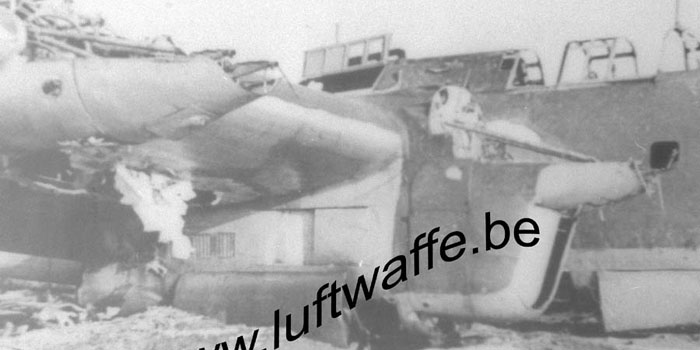
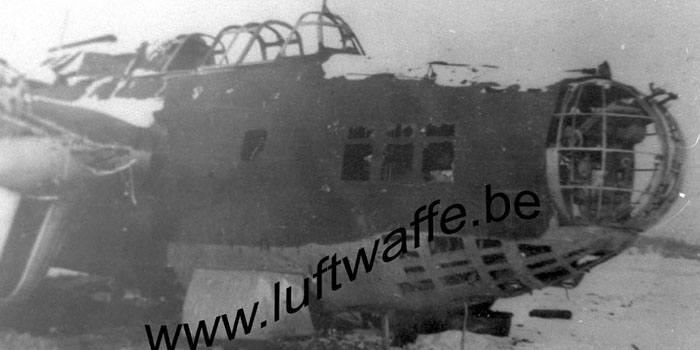
Two images of a downed Pe-8 AM-35A
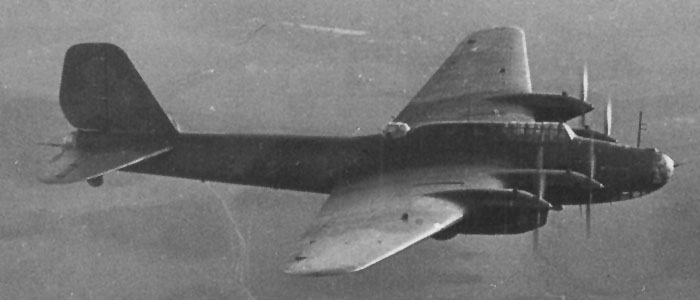

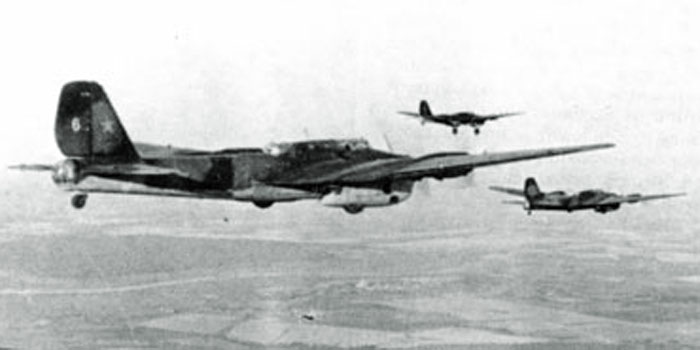
Some notes on coloring planes after the war outbreak:
On 20 June 1941, the last day of peace, it was published an order of NKAP (the Ministry for Aeronautical Industry) to paint all planes with a new standard camouflage within one month.
Already existing planes with uniform green upper surfaces had to be added with matt black. Undersurfaces presumably preserved the original finish.
For newly built planes, the instructions said to utilize matt light blue for undersurfaces (not specified what type of paint, but all previous light blue paintings were gloss, so they have to be A-28m for all-metal planes and AMT-7 for mixed construction planes).
Many maintenance manuals of the first years of war describe these paints: dope AMT-4 green, AMT-6 black and AMT-7 blue enamel or oil A-24m, A-26m and A-28m of the same colours. Oil colors were less utilized, also because AMT colors can adhere well to primed metal surfaces.
Oil enamels were intended to be sprayed on the exterior metal surfaces, even unprimed. Painting with a brush meant poor paint properties, and was allowed only as a second choice, ex. for repairs.
Prop blades were now fully painted black.
The order of June 1941 changed the national marks of planes too. Red stars, of plan type or with thin black outline, were now placed in six positions:
- one on each side of fuselage (not always, on twin-engined planes),
- one on each side of rudder/stabilizer,
- one on the undersurface of each wing.
Note the deletion of stars over the wings, and the introduction of new ones on the tail.
Left:
These images allow to compare the resemblances and differences in camouflage between many planes of the same type. The pattern is not strictly unified, but a wide commonality is evident.
Link to a profile of white 6:
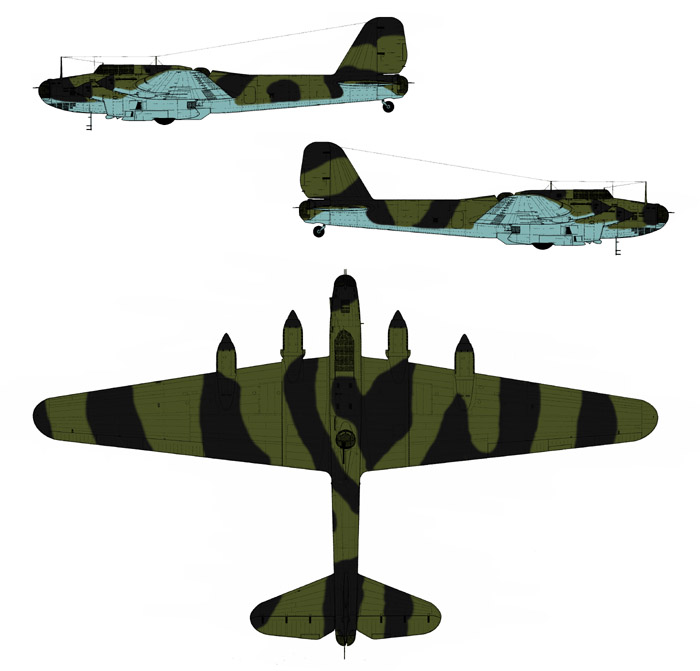
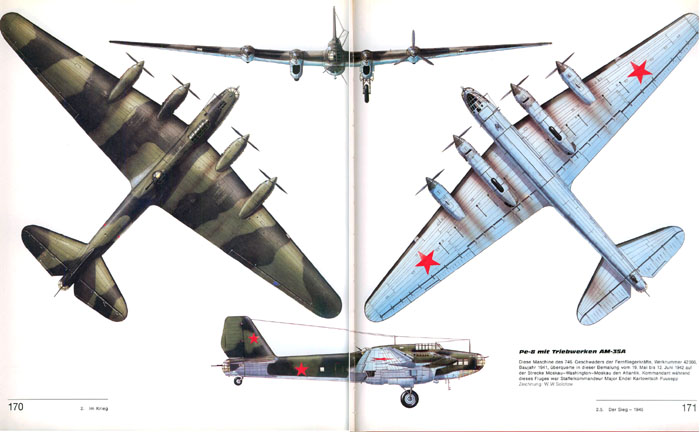
Below: this sketch was included into the order of NKAP as a sample on how to camouflage multi-engined planes.
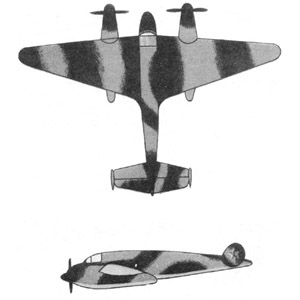
Although not strictly respected by any type, it gives the key to reconstruct the usual patterns adopted by each factory on its planes. It has a lot in common with the NKAP template of 1941, but adapted to the size of the plane by increasing the number of bands.
Left: a drawing obtained from photos, taking into account the variability between single planes. It fits enough the sketch of NKAP, and the most of the observed planes seem to wear a variant of this pattern.
Below left: another similar drawing from Pe-8 Der sowjetische Fernbomber of Ulrich Unger
About the colors, the metal parts were painted with oil paints A-24m, A-26m and A-28m, while the fabric-covered parts of control surfaces were painted with the equivalent nitro paints AMT-4, 6 and 7. Note that light blue AMT-7 is somewhat darker than the A-28m; however, it can't be excluded the occasional use of AII blue, more similar to A-28m, instead of AMT-7.
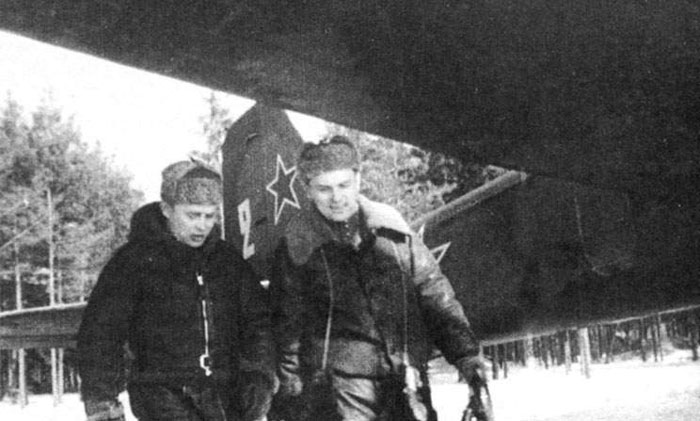
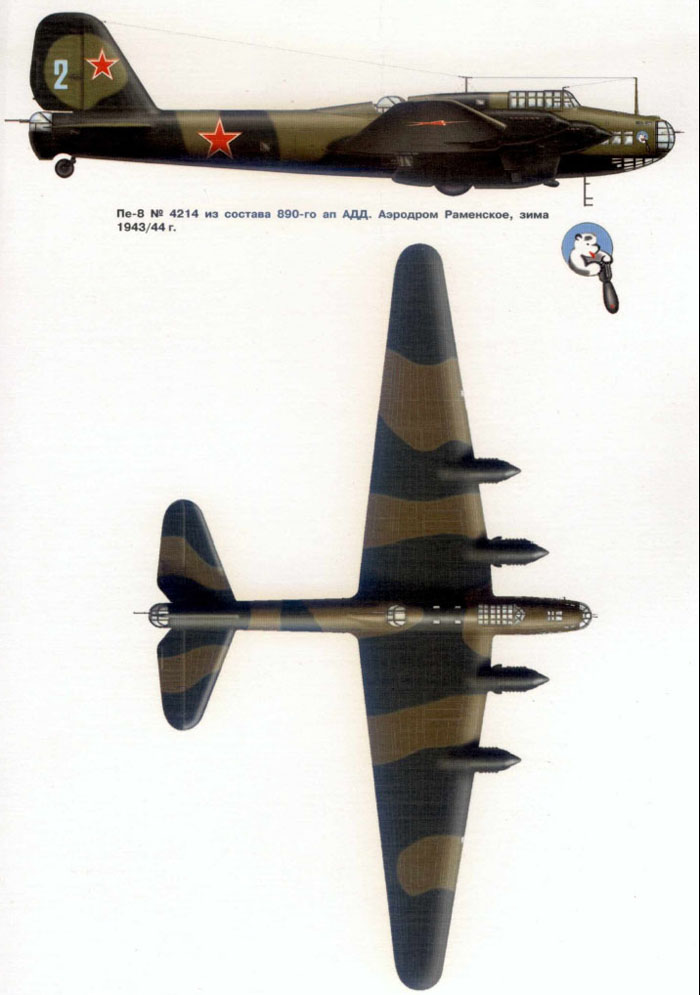
TB-7 AM-35A n. 4214 was built in 1940 and modernized in 1942.
It look to have been modified many times during its service.
This plane took part to the Battle of Kursk and the raid over Helsinki.
It crashed on July 13, 1944 due to the failure of the flaps on landing.
Below: a photo of the nose showing the unique emblem of a bear (?) dropping a bomb.

Left: a drawing of the same plane published on M-Hobby. It put in evidence both the emblem (but the bomb should be grey in my idea) both the CF-1 TAT tail turret.
N. 4214 was one of 10 planes to be modified with this type of tail turret.
Below: detail of the CF-1 TAT.
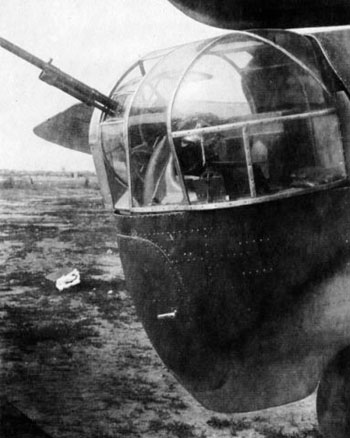
To know more on this plane, see:
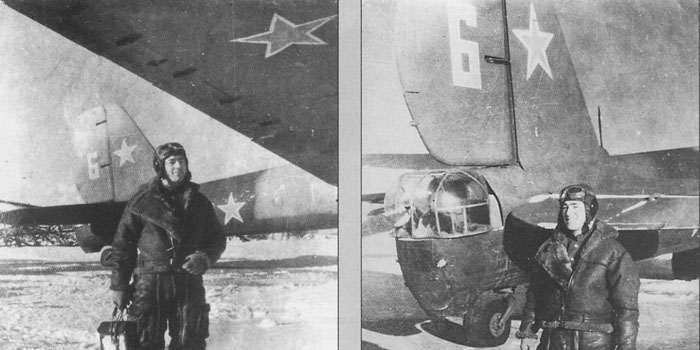
Two images of Pe-8 N°42057 at Kratovo airport, 1944. The unit was made Guards and renamed 25 Gv. AP DD (25th Air Regiment of Long range Aviation).
The field modification of the national marks with white-red outlines is evident, as the addition of a light camouflage color, probably washable white paint.
According to another interpretation, the light bands could be due to the addition of light brown AMT-1 or A-21m to fit the camouflage standards introduced in August 1943.
Note the rare CF1 TAT turret.
A profile of this plane:
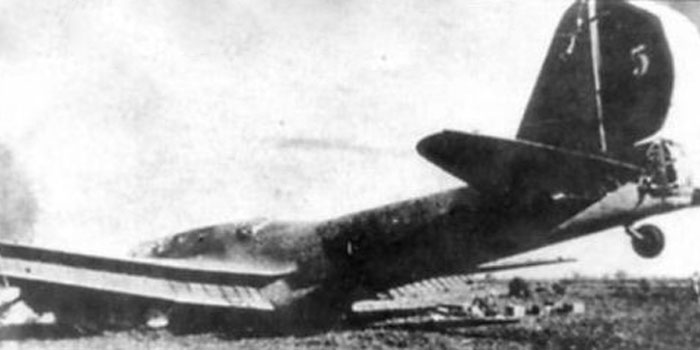
Pe-8 AM-35A n. 42018 after an emergency landing. Note the light blue undersurfaces.
Photos from the magazine Luftwaffe "Adler" of 27.10.1942
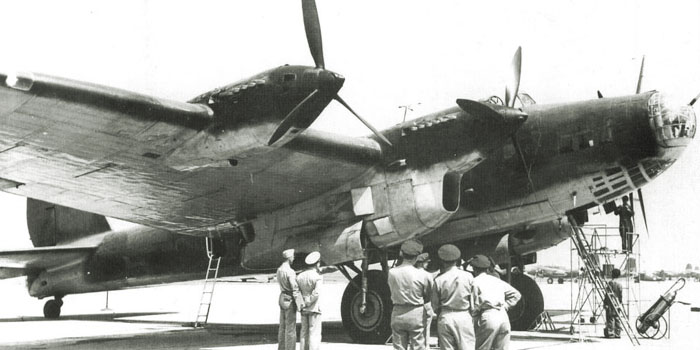
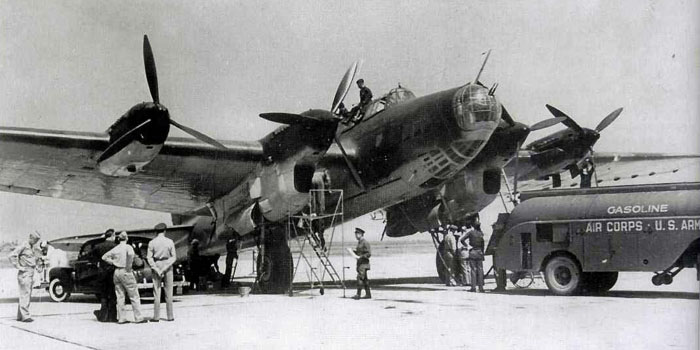
TB-7 n.42066 was built in 1941 with Diesel engines, and then re-engined in 1942 with the (relatively) more reliable AM-35As.
After the upgrade, it has been used for a number of trans-Atlantic flights.
In April 1942, the plane flown by Major Asyanov made a non-stop flight to Great Britain carrying embassy officials and diplomatic mail.
On May 19, 1942, another historic flight to the USA and back via England transported the Soviet Minister for Foreign Affairs Vyacheslav Molotov and his staff; this meeting led to the most important agreement between the allies, such as lend-lease agreements and the opening of the 'second front'.
The pilot Maj. Asyanov, and the navigators Major Romanov and Shtepenko were made Heroes of the Soviet Union.
The plane took part in the raid over Berlin in August 1942.
During the fall 1942, the plane crashed and was destroyed because of an engine failure.
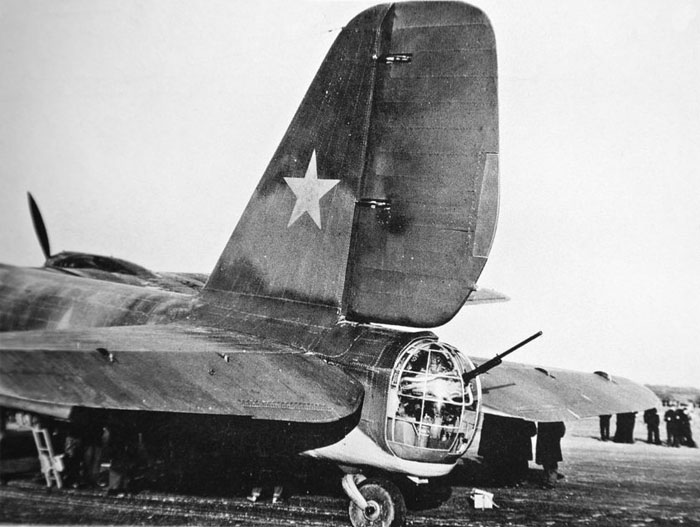
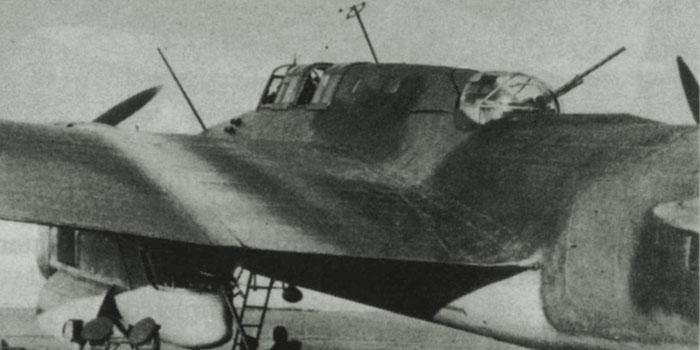
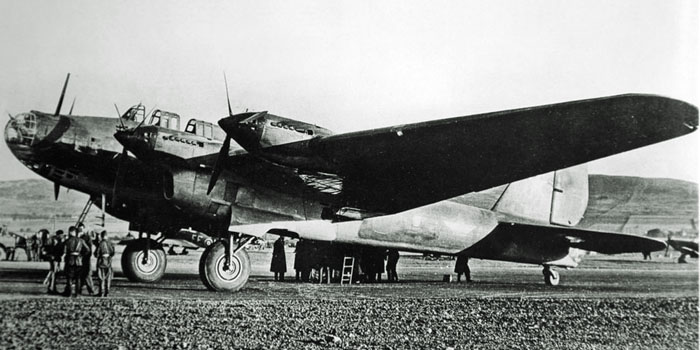
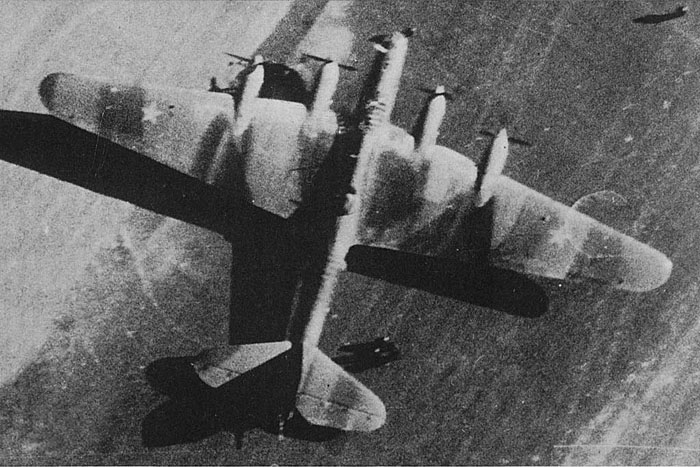
During the stops in Great Britain and USA, a lot of good photos of this plane were taken, allowing some considerations on its camouflage.
Here, the front of engine cowlings is certainly black on undersurfaces too.
Being the rudder, elevators and ailerons covered by fabric, it's possible that there were differences in shades with the colors utilized on metallic surfaces.
Note the light part behind the engines, because of the alteration of paint due to the hot fumes.
The red stars seem plain, without any outline.
The unique photo from above allows to see the black-green camouflage pattern, that looks roughly preserved on all the TB-7 of that period, and has some resemblance to the NKAP pattern of 1941, with an increased number of bands due to the huge size of the plane. On this plane, some of the bands on the wings are interrupted in correspondence of the engine cowling, that are mainly green; the front of them was painted black on the lower surface too.

The most unusual characteristic is the presence of red stars on the wing upper surfaces, unique in 1942, probably painted to avoid the risk of misidentification by British and US interceptors.
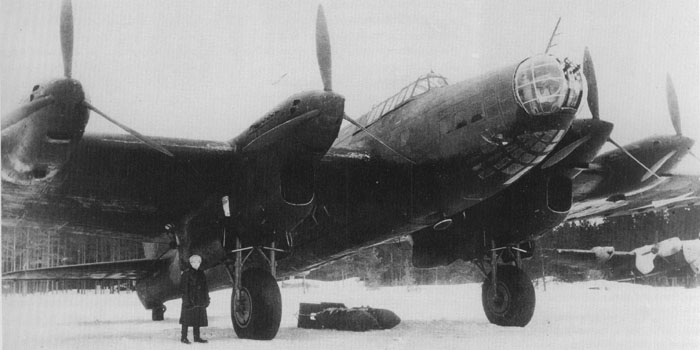
Left:
Kratowo, winter 1942/43. The undersurfaces of Pe-8s started to be painted in 'Noch' deep black intended for night operations.
Left down:
This Pe-8 AM-35 seems to have a standard black-green camo of 1941 modified with some light brown. The stars are still without white-red outline.
Below:
a detail of a Pe-8 AM-35A with the undersurfaces painted black.
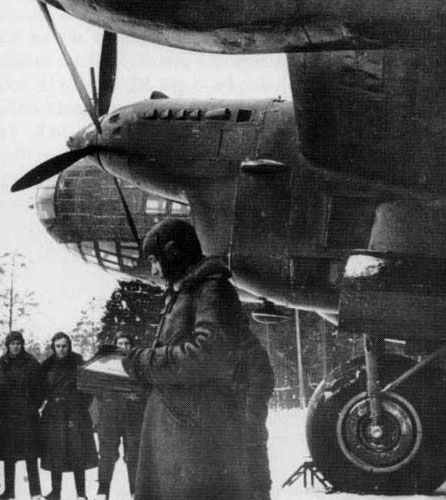
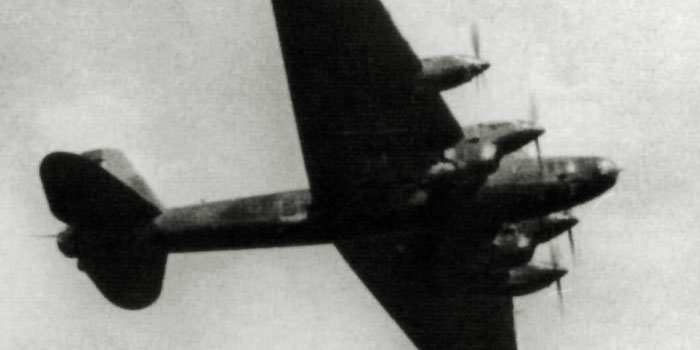
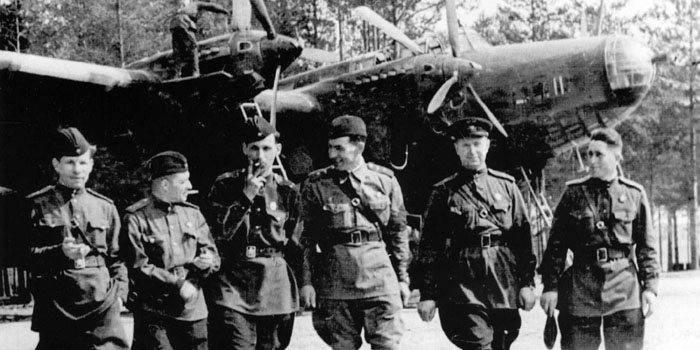
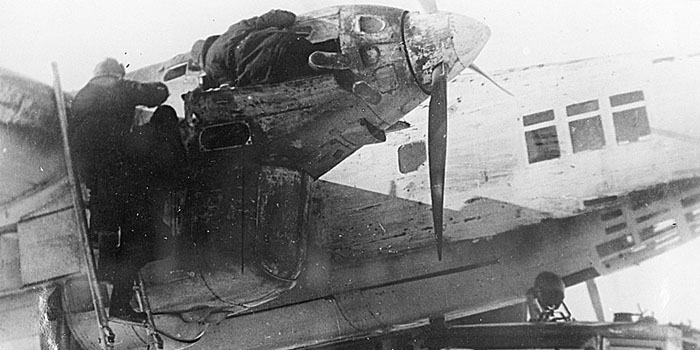
Pe-8 AM-35A with a rough winter finish over the black-green camouflage, probably in winter 1941/42.
The undersurfaces are still light blue instead of the black that was generalized later.
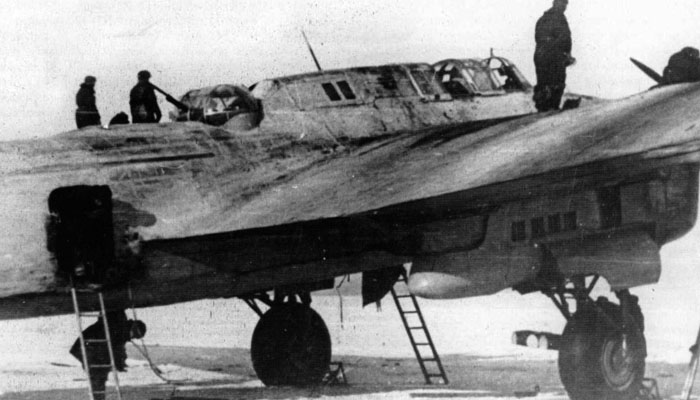

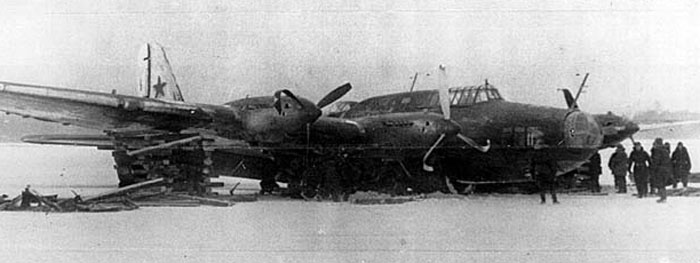

Landing accident occurred to Pe-8 AM-35 s/n 42028 of 746 BAP, flown by the crew of Sergey.S.Sugak on February 24, 1942.
The plane bears a partial winter camouflage over the usual black-green camouflage; the undersurfaces seem already painted in 'noch' black.
This plane took part in strategic attacks on Germany of 1942, the Battle of Stalingrad, the Battle of Kursk, the raids on Helsinki in February 1944.
On July 27, 1944 it was shot down by enemy anti-aircraft artillery.
The accident is reported at http://heavybomber.narod.ru/_42028.htm
Two different profiles of this plane are here:
http://crimso.msk.ru/Images6/AV/AV08-5/21-1.jpg
http://crimso.msk.ru/Images6/AV/AV08-5/21-2.jpg
Plus two without winter painting
http://crimso.msk.ru/Images6/AV/AV08-5/21-4.jpg
http://crimso.msk.ru/Images6/AM/AM06-1/5-2.jpg
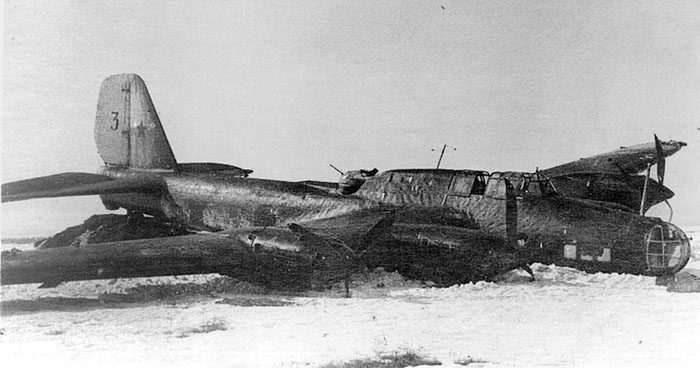
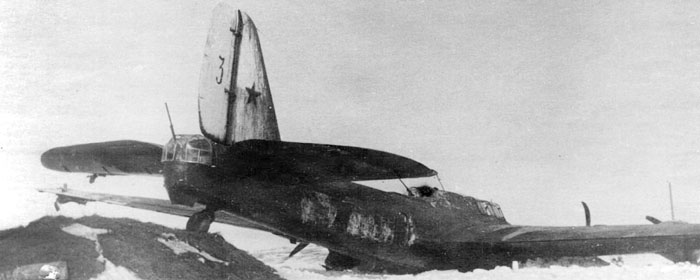
Downed Pe-8 AM-35A red 3.
The plane has some winter white paint on its tail, fuselage sides and wingtips.
Note the rare type of tail turret.

One of the three bombers with advanced diesel engines M-30B. It has been upgrading as a carrier of extra heavy bombs FAB-5000.
On April 29, 1943 it took part to the first sortie with FAB-5000 against Koenigsberg. All three planes of this variant (42028, 42038, 42039) survived to the war.
Image from http://heavybomber.narod.ru/_42038.htm where you can read the report of a landing accident to 42038 (in Russian).

The fifth production aircraft manufactured without a system of high-altitude flight, ACN-2, served as the prototype for all subsequent machines.
The plane, flown by the crew of Sergey Asyamov, crashed on May 31, 1943 at takeoff because of a collision with a fighter Yak-7B. A report of the crash is here: http://heavybomber.narod.ru/_4215.htm
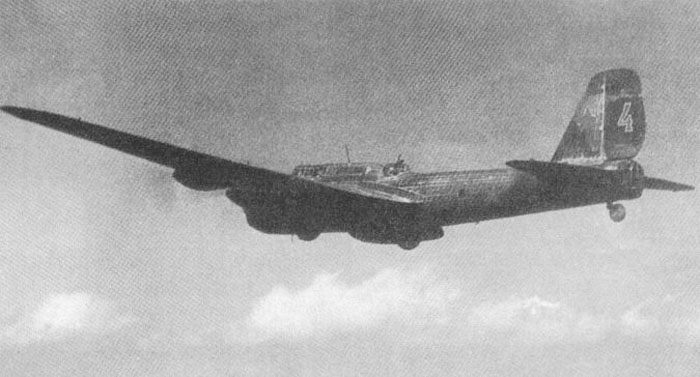
Pe-8 AM-35A 'red 4' n.42088 (42082 according to some sources) of 746-th AP DD in flight, March 1943.
The camo has some visible light parts, unclear if remains of a winter camo (more likely, in my idea) or overpaintings with light brown paint.
A (questionable) profile of this plane is at:
http://crimso.msk.ru/Images6/AV/AV08-5/21-3.jpg
and
http://crimso.msk.ru/Images6/MA/MA94-1/26-1.jpg
Another colorful but unlikely interpretation is at:
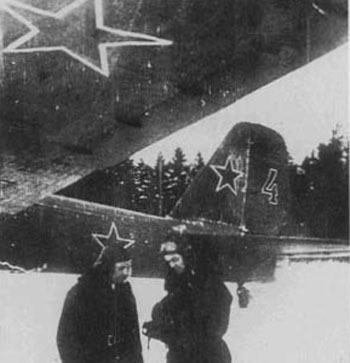
Pe-8 AM-35A c/n 42088of 25th Gv.AP DD, commanded by major S.S.Sugak.
The markings are of the type utilized after August 1943, but it's impossible to say if any brown has been added on the original black-green camouflage.
Image from Pe-8 Der sowjetische Fernbomber of Ulrich Unger
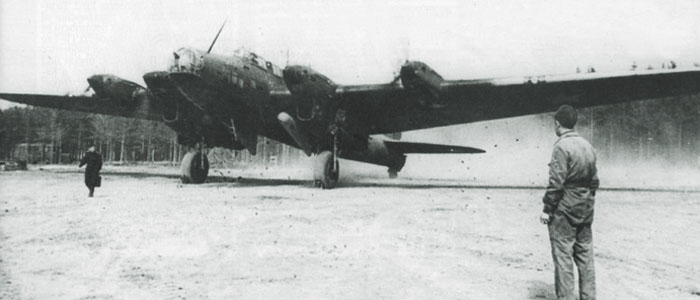
Pe-8 AM-35 with VAP-1000 device, possibly on Rameske airport in 1943.
Observing the light leading edge of both wings, one can see a light color. This could be due to the application of a de-icing system, that was left painted with yellowish primer for some time.
It seems that the national marks are plain red stars, as those utilized before August 1943.